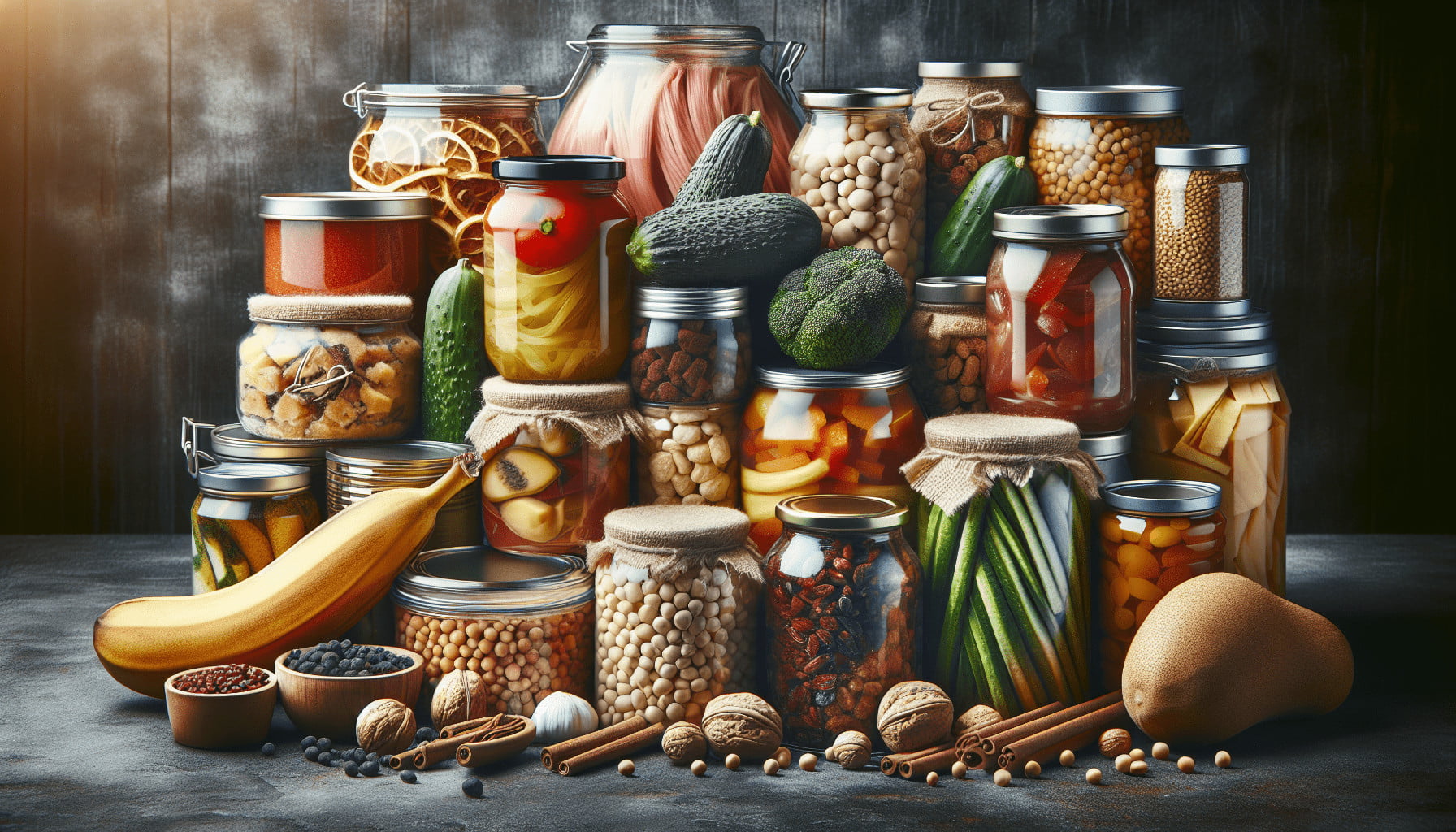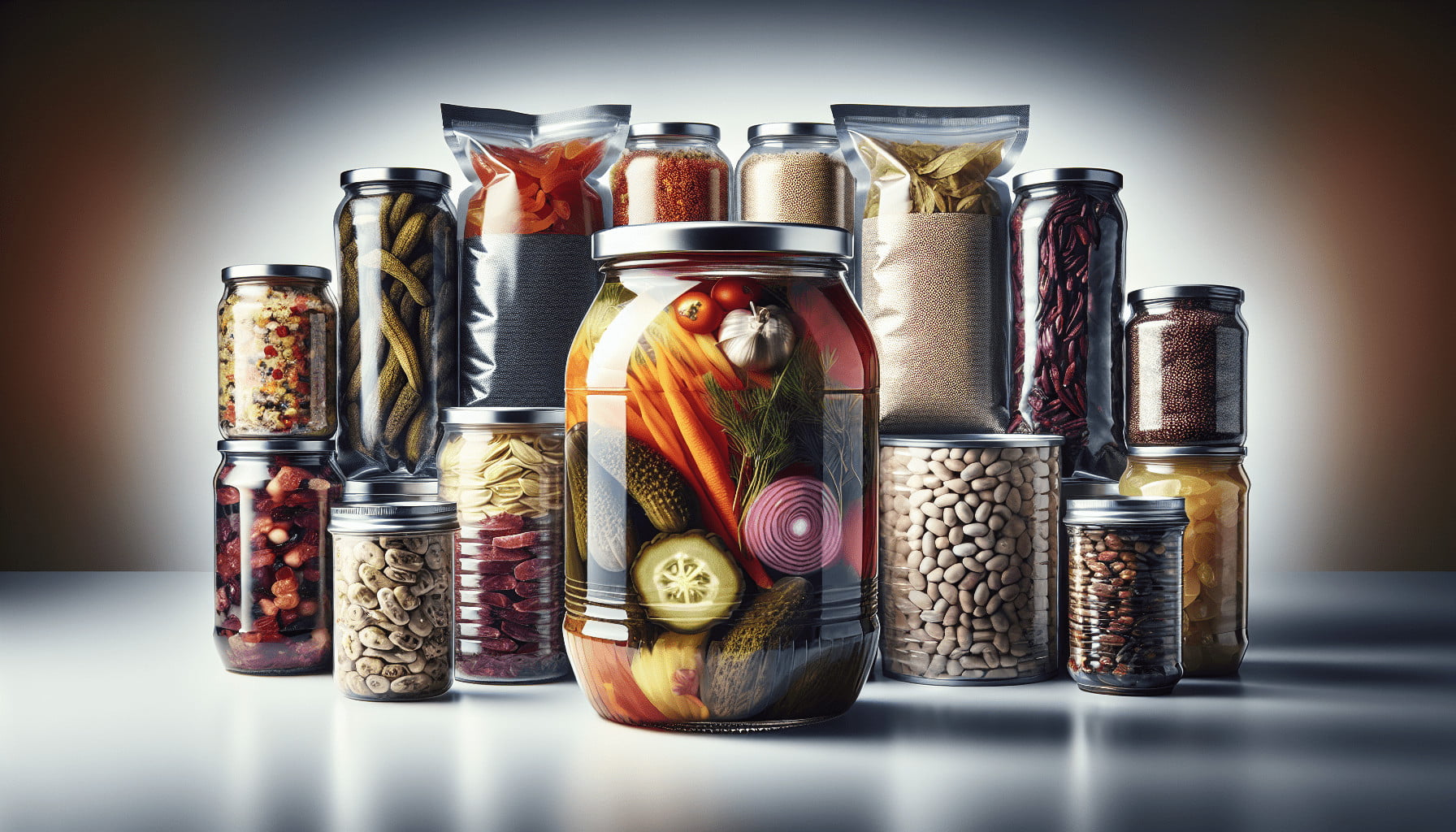Ever wondered how you would preserve food in case of an emergency? Let’s face it, whether it’s a natural disaster, a prolonged power outage, or even just a personal crisis, having a good supply of preserved food can be a lifesaver. While it may seem like an overwhelming task to figure out the best ways to keep your food edible and safe for long periods, you’ve come to the right place.
Emergency Situations and the Importance of Food Preservation
When disaster strikes or an emergency occurs, everyday routines can get disrupted. One of the immediate needs you’ll face is access to safe, nutritious food. Supermarkets may be closed, supply chains could be broken, and you might be homebound. What do you do then?
Food preservation isn’t just about keeping food around for a rainy day; it’s about having the right kinds of food in the right conditions so that you can sustain yourself and your loved ones when regular food supply channels are not an option.
Types of Food to Consider for Preservation
Before diving into the various methods of food preservation, it’s essential to understand the types of food that store well and for how long. Different foods have different storage requirements and shelf lives.
Non-Perishables
Non-perishable foods are designed to last for long periods without spoiling. These include items like canned goods, dried pasta, rice, and grains.
| Food Type | Example | Shelf Life |
|---|---|---|
| Canned Goods | Beans, vegetables, meats | 2-5 years |
| Dried Pasta | Spaghetti, macaroni | 1-2 years |
| Grains | Rice, quinoa, barley | 1-2 years |
Perishables
Perishable foods tend to spoil quickly but can be preserved using certain methods. These include fruits, vegetables, and meats.
| Food Type | Example | Preservation Methods |
|---|---|---|
| Vegetables | Carrots, spinach, potatoes | Canning, freezing |
| Fruits | Apples, berries, bananas | Dehydrating, canning |
| Meats | Beef, chicken, fish | Curing, smoking, freezing |

Methods of Food Preservation
There are various proven methods to preserve food effectively for emergency situations. Each technique has its own pros and cons, suitable for different types of foods and durations.
Canning
Canning is a method that involves placing foods in jars or cans and heating them to a temperature that destroys microorganisms and inactivates enzymes. This process also removes air from the jars, forming a vacuum seal as they cool.
Water Bath Canning
Used primarily for high-acid foods like fruits and pickles, water bath canning is relatively simple and doesn’t require expensive equipment.
- Fill jars with prepared food.
- Submerge jars in boiling water.
- Process for a specified period depending on the food.
Pressure Canning
For low-acid foods like vegetables, meats, and seafood, pressure canning is necessary. It requires a special pressure canner to reach the required high temperatures.
- Fill jars with prepared food.
- Place jars in a pressure canner.
- Process under regulated pressure for a specific time.
Freezing
Freezing is a straightforward method but requires access to a reliable freezer. It’s excellent for preserving the flavor, color, and nutritional value of many foods.
- Clean and prepare food.
- Package food in airtight, moisture-resistant containers.
- Store in a freezer at 0°F (-18°C) or lower.
Dehydrating
Dehydrating removes the moisture from food, making it inhospitable to bacteria, yeast, and mold. It’s ideal for fruits, vegetables, and even meats.
- Slice food thinly for even drying.
- Use a dehydrator or a low-temperature oven.
- Store dried food in airtight containers.
Vacuum Sealing
Vacuum sealing extends the shelf life of foods by removing air from the package, thus reducing oxidation and spoilage.
- Place food in specialized vacuum bags.
- Use a vacuum sealer to remove air and seal the bag.
- Store in a cool, dark place or freeze for longer preservation.
Pickling
Pickling involves soaking food in a solution of vinegar, water, and spices. It’s a great way to preserve vegetables and fruits while adding a burst of flavor.
- Prepare a pickle brine (typically a mix of vinegar, water, and salt).
- Submerge food in the brine and let it ferment or process.
- Store in sterilized jars in a cool, dark place.
Curing and Smoking
Curing involves preserving food with salts, while smoking uses smoke to add flavor and reduce moisture content. Both methods are traditionally used for meats but can be applied to other foods as well.
- Apply a curing mixture to the meat.
- Let it cure for a specified period.
- Smoke the meat at a low temperature if desired.
- Store in a cool place or freeze.
Choosing the Right Method
So how do you know which method to use for your food preservation needs? It largely depends on the type of food and your available resources. Here’s a quick guide:
| Preservation Method | Best For | Benefits | Drawbacks |
|---|---|---|---|
| Canning | Fruits, vegetables, meats | Long shelf life, flavorful | Requires equipment |
| Freezing | Most types of food | Retains nutrients | Requires reliable freezer |
| Dehydrating | Fruits, vegetables, herbs, meats | Lightweight, space-saving | Can be time-consuming |
| Vacuum Sealing | Meats, vegetables, grains | Extends freshness | Requires special equipment |
| Pickling | Vegetables, fruits, some fish | Flavorful, easy-to-store | High sodium content |
| Curing/Smoking | Meats, fish, some vegetables | Unique flavor, long term | Time-consuming, skill needed |

Storing Your Preserved Food
Proper storage is essential to ensure the safety and longevity of your preserved food. Factors to consider include temperature, humidity, and light exposure.
Temperature
Store canned, dried, and pickled foods in a cool, dark place. The ideal storage temperature is between 50-70°F (10-21°C). Freezing, of course, should be done at 0°F (-18°C) or lower.
Humidity
Excess humidity can lead to mold and spoilage. Keep dried and cured foods in airtight containers or bags to reduce moisture exposure. A dehumidifier can be useful if you live in a humid climate.
Light Exposure
Direct sunlight can degrade food quality. Always keep preserved foods in a dark space or use opaque containers.
Rotation and Usage
Even the best-preserved foods won’t last forever. It’s essential to use and rotate your emergency food supplies regularly. Follow a ”first-in, first-out” system to make sure older food gets used before it spoils.
Labeling
Clearly label all your preserved food with the date of preservation and expected expiration date. It helps in keeping track of what needs to be consumed first.
Regular Checks
Every few months, check your food supplies for signs of spoilage, damaged seals, or freezer burn. It’s better to catch issues early before they become a health risk.
Nutritional Considerations
While preserving food for an emergency, it’s crucial to ensure you’re stocking up on nutritionally balanced items. Here are a few nutritional tips:
Balanced Diet
Aim for a mix of carbohydrates, proteins, and fats. Include fruits and vegetables for essential vitamins and minerals.
Special Needs
Consider any special dietary needs for individuals in your household, such as allergies, intolerances, or medical conditions requiring specific nutrients.
Supplements
In prolonged emergencies, having a supply of multivitamins can help meet nutritional gaps.
The Psychological Aspect
Having a stockpile of nutritious, well-preserved food can offer immense psychological comfort during trying times. Knowing you have one less thing to worry about can help you focus on other pressing issues.
Final Thoughts
Food preservation isn’t just a skill; it’s a necessity for emergency preparedness. Armed with the right knowledge and techniques, you can ensure your family has access to safe and nutritious food during any situation. It’s better to be proactive now than to find yourself unprepared when you least expect it. Make it a part of your routine to maintain and check your preserved food supplies regularly, ensuring you’re always ready for whatever comes your way.
By employing these methods and tips, you’ll have a well-rounded and secure approach to food preservation for those unpredictable moments.
